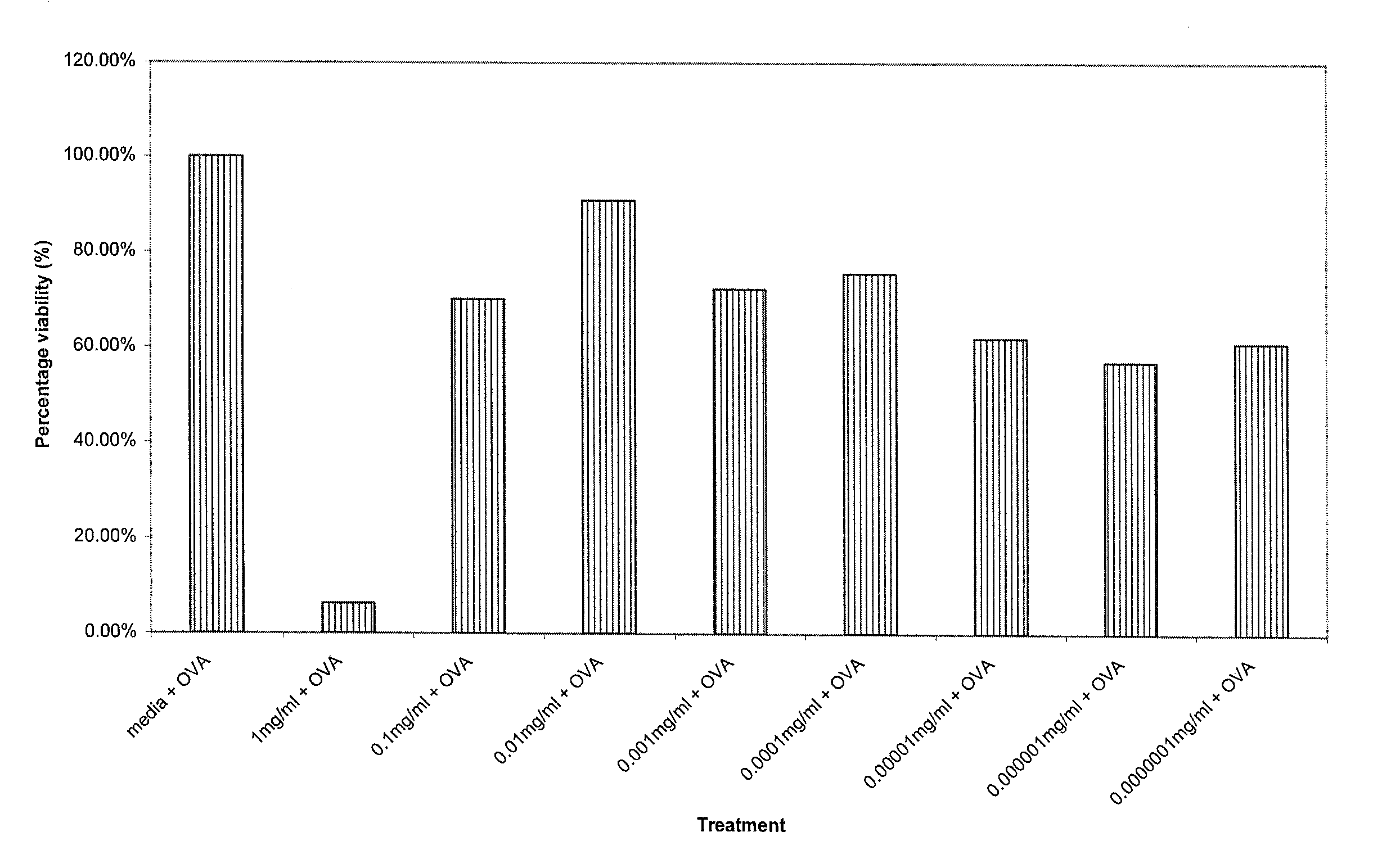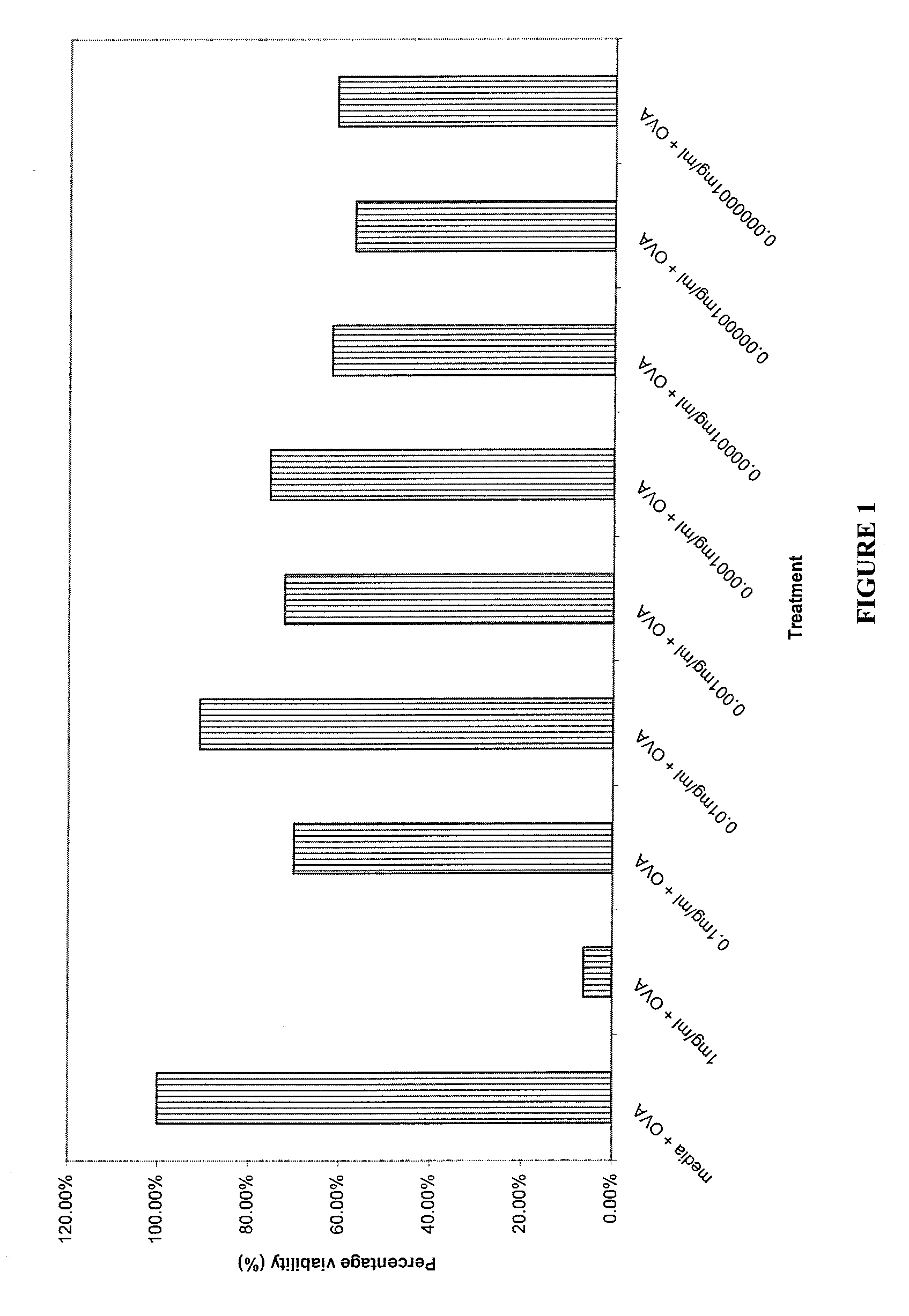Method for the treatment of cachexia
a cachexia and treatment method technology, applied in the field of cachexia treatment, can solve the problems of wasting muscle, joint stiffness, pain, swelling, etc., and achieve the effect of optimizing the efficacy of lozenges and achieving the suitable dissolution ra
- Summary
- Abstract
- Description
- Claims
- Application Information
AI Technical Summary
Benefits of technology
Problems solved by technology
Method used
Image
Examples
example 1
A Composition of the Present Invention
[0102] A composition of the present invention was prepared by mixing the following ingredients:
[0103] Active Ingredients
Powdered Extract of Ginger Root (5% gingerols)28.00 mgHorseradish Root Oil 0.35 mgPowdered Turmeric extract (30% curcuminoids) 2.60 mgPowdered Extract of Green Tea (85% catechins)13.50 mg
[0104] Inactive Ingredients
Cellulose147.05 mg Calcium Silicate3.50 mgMagnesium Stearate3.00 mgSilicon dioxide (silica)2.00 mg
example 2
Cytotoxicity and Cytokine Inhibition
[0105] The composition of Example 1 was tested for cytotoxicity and cytokine inhibition using the following procedures.
[0106] Ten male DO1 1.10 mice (TcR specific for Ovalbumin) five weeks old were employed as TcR Tg lymph node cell donors. The cells were harvested by removing peripheral (PLN) and mesenteric (MLN) cells from the DO11.10 ovalbumin specific TcR Tg mice. Lymph node single cell suspensions were made by passing through nitex mesh. Cell suspensions were aliquoted into well plates at 2×106 lymphocytes per ml, using 1 ml per well. The cells were cultured at 5% CO2 and 37° C.
[0107] Two separate well plates were set up for each of the 24 hour and 48 hour time points employed in the test. 200 mg of the composition of Example 1 were diluted with 52 microliters of glycerine and 948 microliters of RPMI 1640 tissue culture media containing 10% fetal calf serum, 2 mM of L-glutamine, 100 IU / ml penicillin and 100 μg / ml streptomycin to provide an...
examples 3-7
In Vivo Testing for Cachexia
[0113] A formulation was made using the ingredients shown in Table 1:
TABLE 1AmountWeightIngredients(grams)PercentGlycerin54.94PE Turmeric 30%0.2460.24PE Ginger 5%2.652.62Horseradish Oil0.0330.03PE Green Tea 90%1.281.26TOTAL9.2099.10Standard PBS9290.90TOTAL101.209100
NOTES:
PE = Powdered Extract
PBS = Phosphate Buffer Solution
The PBS was added to the 9.2 of extract to come up with the stock solution
[0114] 0.5 ml was injected to deliver 5 mg of ingredients other than PBS per injection.
PUM
 Login to View More
Login to View More Abstract
Description
Claims
Application Information
 Login to View More
Login to View More - R&D
- Intellectual Property
- Life Sciences
- Materials
- Tech Scout
- Unparalleled Data Quality
- Higher Quality Content
- 60% Fewer Hallucinations
Browse by: Latest US Patents, China's latest patents, Technical Efficacy Thesaurus, Application Domain, Technology Topic, Popular Technical Reports.
© 2025 PatSnap. All rights reserved.Legal|Privacy policy|Modern Slavery Act Transparency Statement|Sitemap|About US| Contact US: help@patsnap.com



